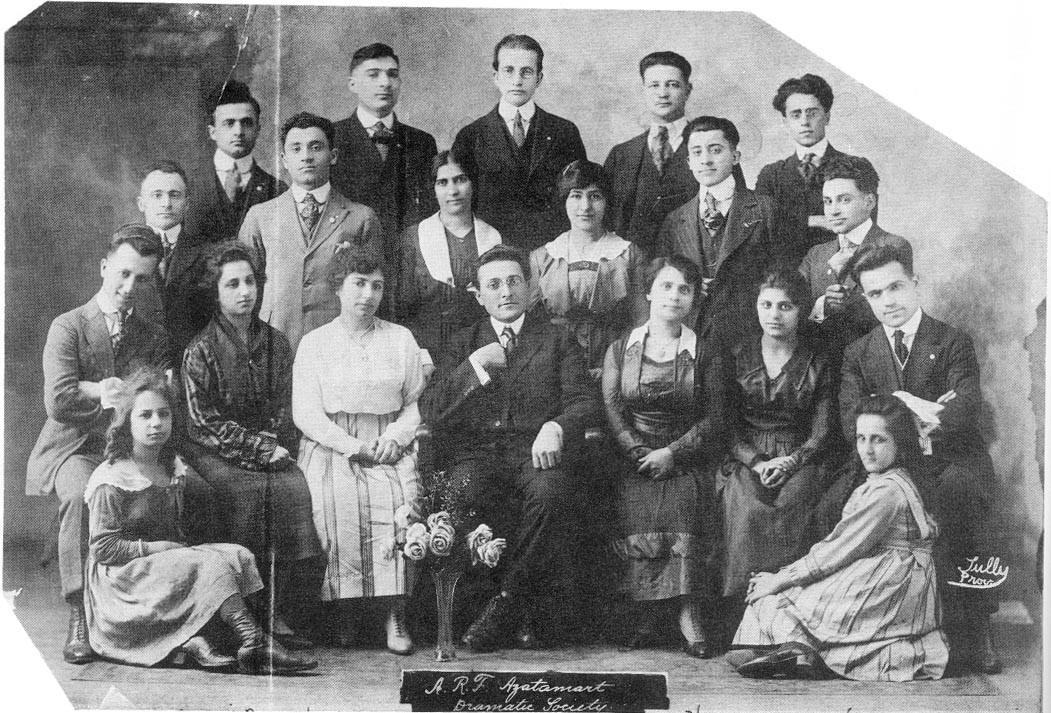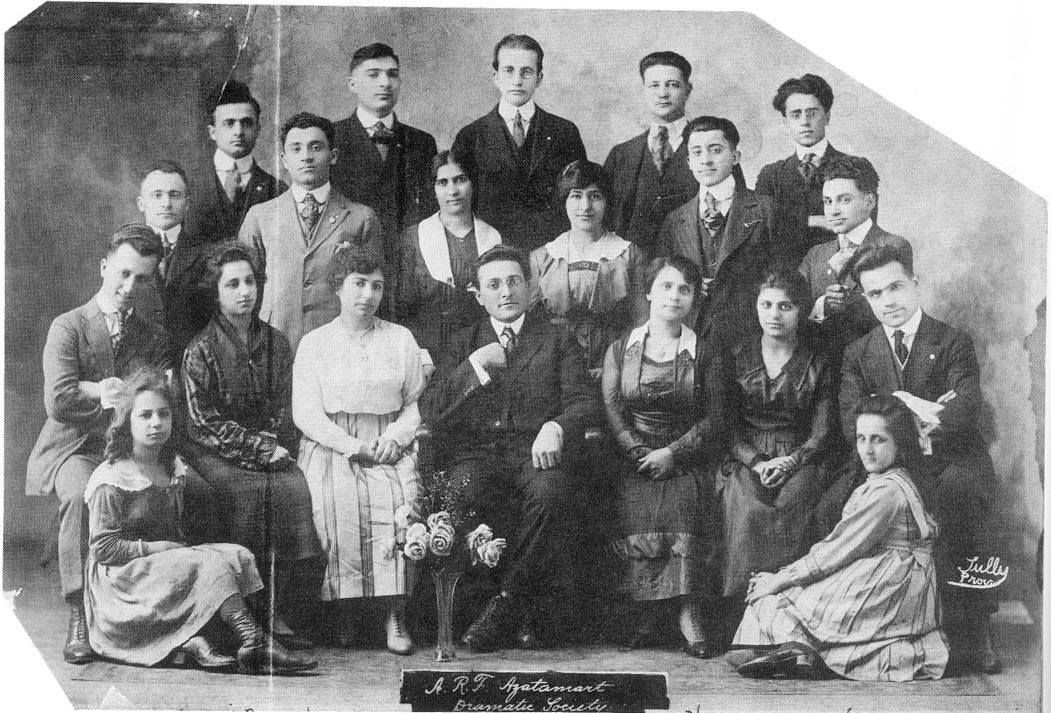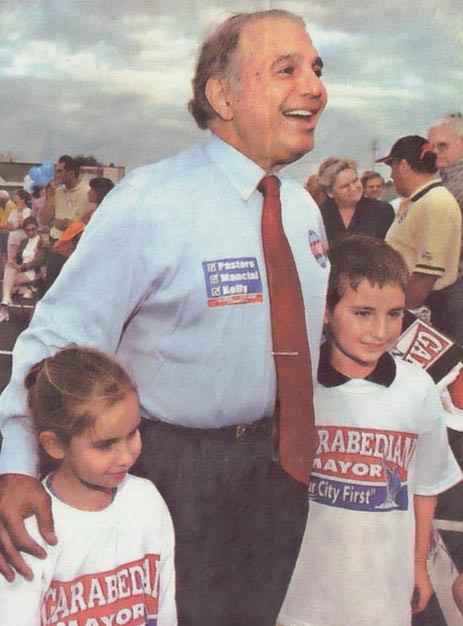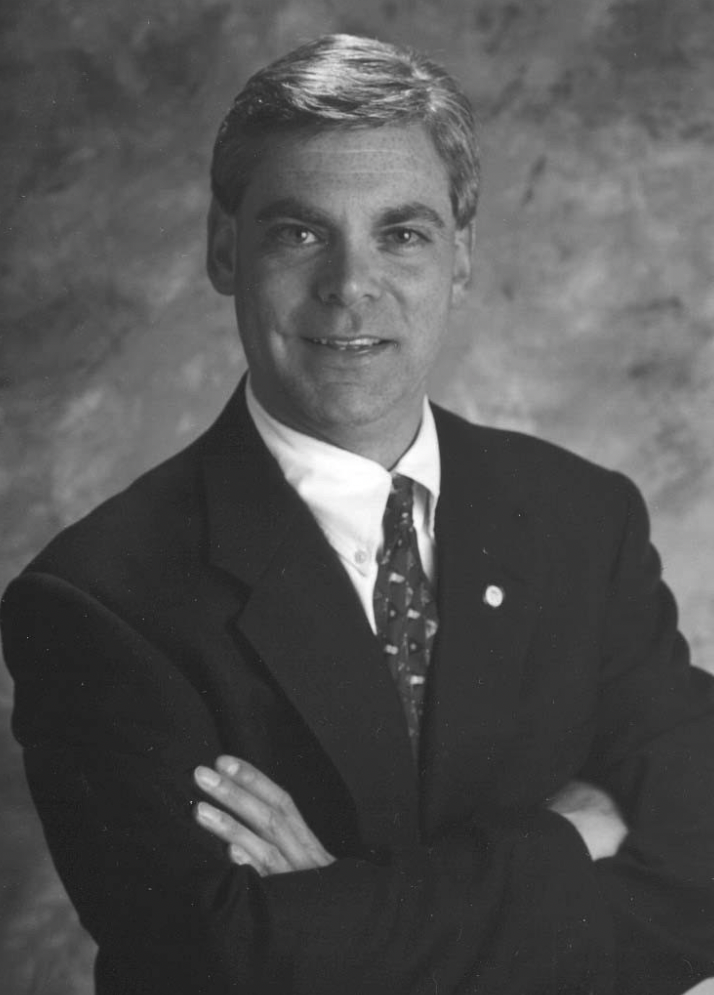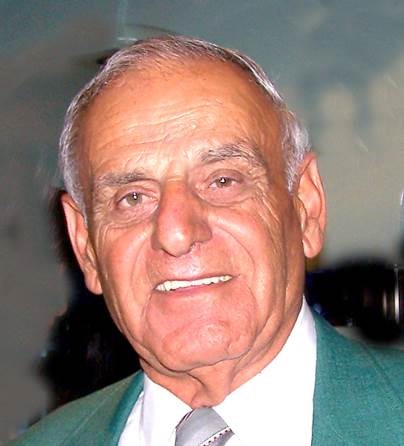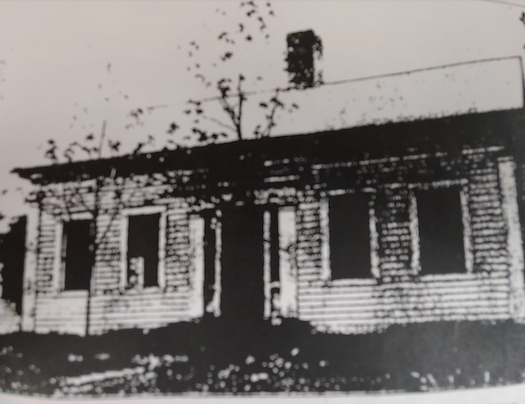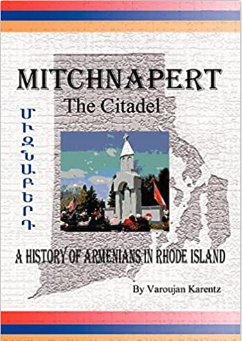[Most of this article was written in 2003 and is based on information at that time. The information has not been updated, except in a few spots where noted.]
Based on the 2000 federal census, Rhode Island’s ethnic population encompasses 155 different nationalities. Most are derived from mixed generations of those who migrated from Europe. This article is a reflection of a lesser minority, the Armenian community. It discusses its contributions, history and influence as descendants of survivors of the modern world’s first genocide.
The classification from the Rhode Island census placed Armenians as being the 22nd highest concentration of nationalities in Rhode Island represented by a population of approximately 7,000 inhabitants.
In Rhode Island as in most other New England States, there is a tremendous mixture of races and ethnic ancestry. In terms of ratio, Armenians in Rhode Island represent only slightly more than one-half of one percentage of the entire Rhode Island state population.
While most Armenian immigration into Rhode Island occurred during and following World War I, its forced immigration from its native lands dates back to 1895.
Famed for Noah’s Ark, which settled on Mount Ararat, and the world’s first Christian nation decreed in year 302 AD, Armenia was overtaken by the conquering Ottoman Turkish Empire 600 years ago. Its population faced attempts at extermination beginning in 1895 in the eastern regions of Anatolia. In 1915 the Turkish Government declared “Turkey is for Turks.” Named as “Infidels” along with resident Greeks and Jews, 1,500,000 Armenians of the 3,000,000 population were massacred. Not until 1944 was the word “genocide” coined, but it fits what occurred in Turkey.
Armenians were dispersed because of the tragic genocide committed against the Christian minority whose rich history dates back thousands of years. Armenian properties were seized in the interior locations. Major Armenian provinces were decimated. Fleeing refugees filtered through the destruction into neighboring lands of Moslem nations and further into Europe and Asia. The survivors sought a safe haven and many of the world’s countries welcomed them with open arms. Thus, Armenians came to America from almost every corner of the world.
The disposition of Armenians today finds some 8 million located worldwide. About 3 million are in the independent Republic of Armenia in Eastern Europe, while 5 million have migrated to different parts of the world—including 7,000 in Rhode Island.
1890 – 1900
The decade of 1890 in Turkey was difficult for Armenians there for a number of reasons. Certainly, the persecution by the Turks transformed living there into an intolerable situation, but there were no straightforward ways to get out of Turkey. Word about American democracy with opportunities of work, education and prosperity had reached into the villages and cities but local transportation, poor communications, harassment by officials, lack of funds and a means of secure passage out of the interior evaded many. Prior to 1890 there was only a small group of Armenian students, businessman and professionals residing in America. In Rhode Island there were less than a dozen or so. Yet it was this basic core, all who dwelled in Providence (except for one) who provided the contacts and helping hands to the first wave of immigrants who arrived in the United States.
1900 – 1940
The second wave of immigration was the largest group. U.S. immigration laws were weak until 1924 and many took advantage of the great American open-door policy. Early in the period, extended families, married couples and relatives such as aunts and uncles arrived. Following them, due to the genocide committed in 1915, thousands of homeless, orphaned Armenians found their way to America with help from agencies and foreign governments. It was this period where Armenians who settled in Rhode Island made the largest and most significant impact. It is also from this generation where the Armenian immigrant settlements in Providence were initially recognized (Douglas Avenue/Smith Hill) and Armenians became known in Rhode Island as a definitive ethnic community.
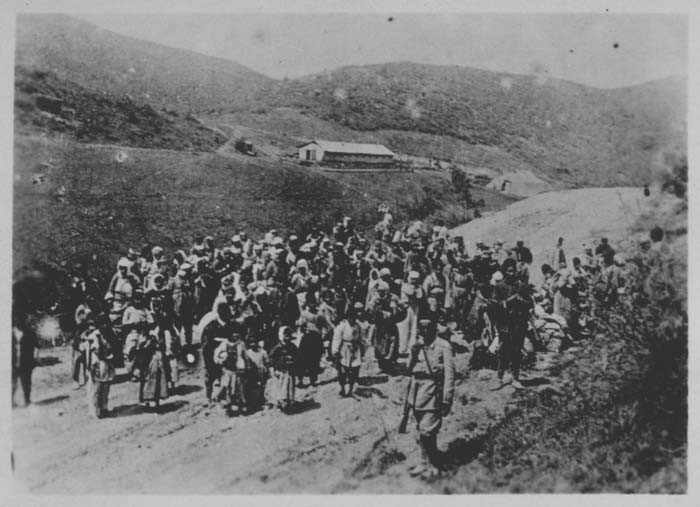
Ottoman troops guard Armenians being deported from the Ottoman Empire, 1915-1916 (National Archives)
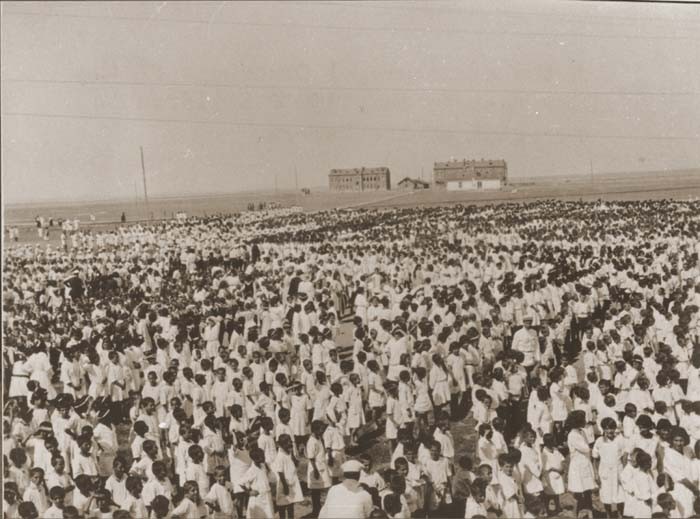
About 1,500 Armenian children at a refugee camp in Alexandroupolis, Greene, 1921-1922 (National Archives)
1940- 1950
The post-World War II period saw the third wave of Armenian immigration. While the numbers who arrived in America were not large, they were comprised mostly of entire families. These groups were decidedly different than the orphans and individual genocide survivors of the early 1900s. There were few Armenians remaining in central Turkey after 1920. Most had fled into the Armenian State of Union of Soviet Socialist Republic (USSR). This new group of immigrants came from other locations because of the ravages of war that took place in Europe and the Middle East. They were dispersed due to Allied and Axis armies of World War II that had reshaped the face of that part of the world’s regions. Many who arrived were Armenians who had witnessed the genocide two decades earlier but had taken haven in southern and eastern Europe and in Arab states. Now, new quotas, national policies, a displaced persons act, and humanitarian initiatives as the result of strife and conflict were keys of entry into America.
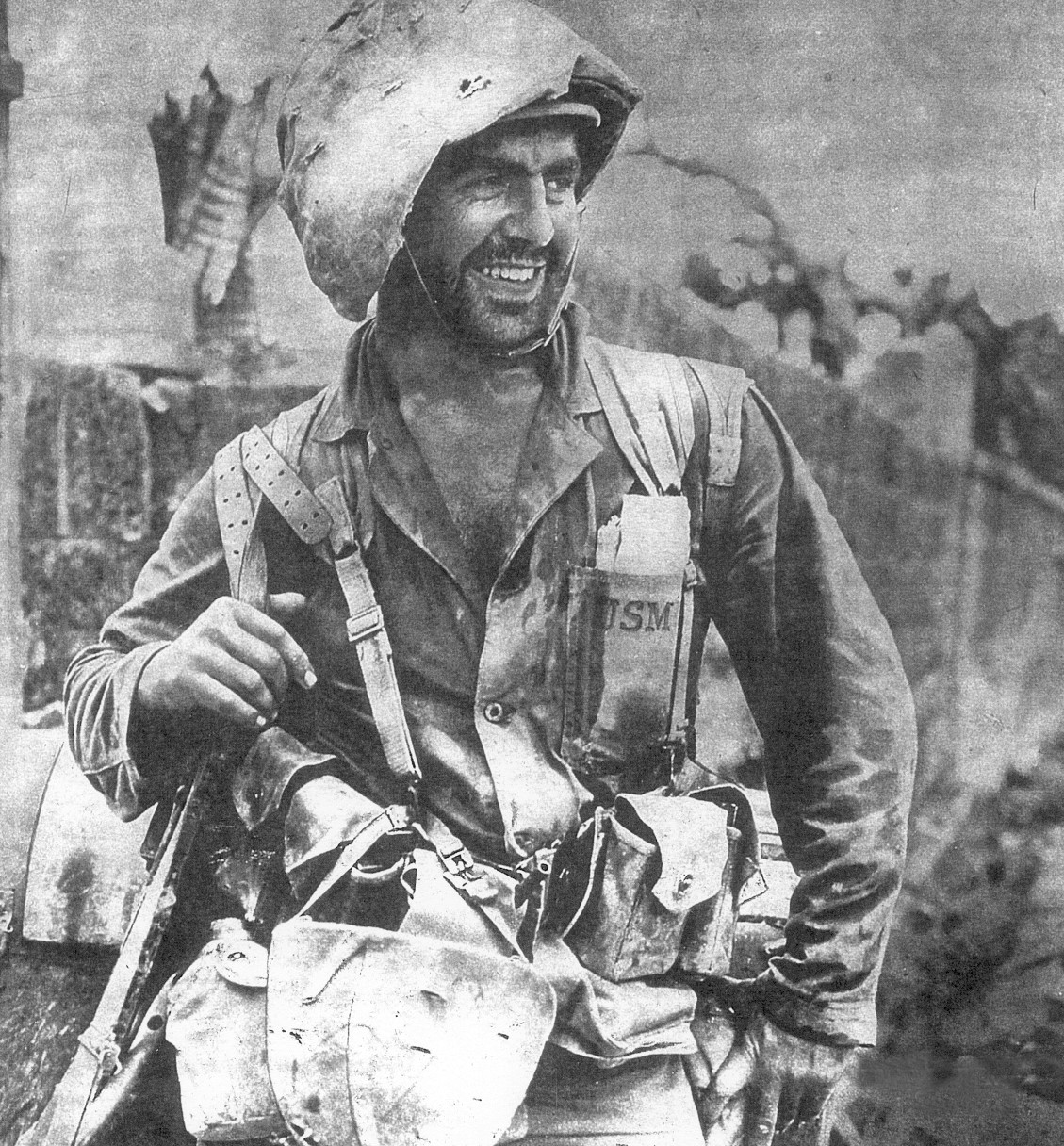
Corporal Harry Kizirian in battle dress as a Marine in the Pacific during World War II. He was reportedly Rhode Island’s most decorated World War II soldier. (Kizirian family)
1950 –2000
Armenians of the first and second generation, those who were children of genocide survivors and their children, from many countries of the world comprise the fourth significant wave of immigration. This time, world events, geographical patterns, new country republics and national economic changes gave impetus to migration. It was most strong during the 1950s and 1960s with a gradual decline during the 1970s and 1980s. Again, while the numbers who immigrated are not many as it relates to the Armenian population in Rhode Island, most significantly, these immigrants brought with them the Armenian language and revitalized Armenian culture and heritage. Although the Armenian American community was vigorous and active, aspects of intermarriages showed demise within dominant Armenian American communities including within Rhode Island. This was caused by the evolutionary assimilation and acceptance of American values coupled with the present-day cosmopolitan way of life.
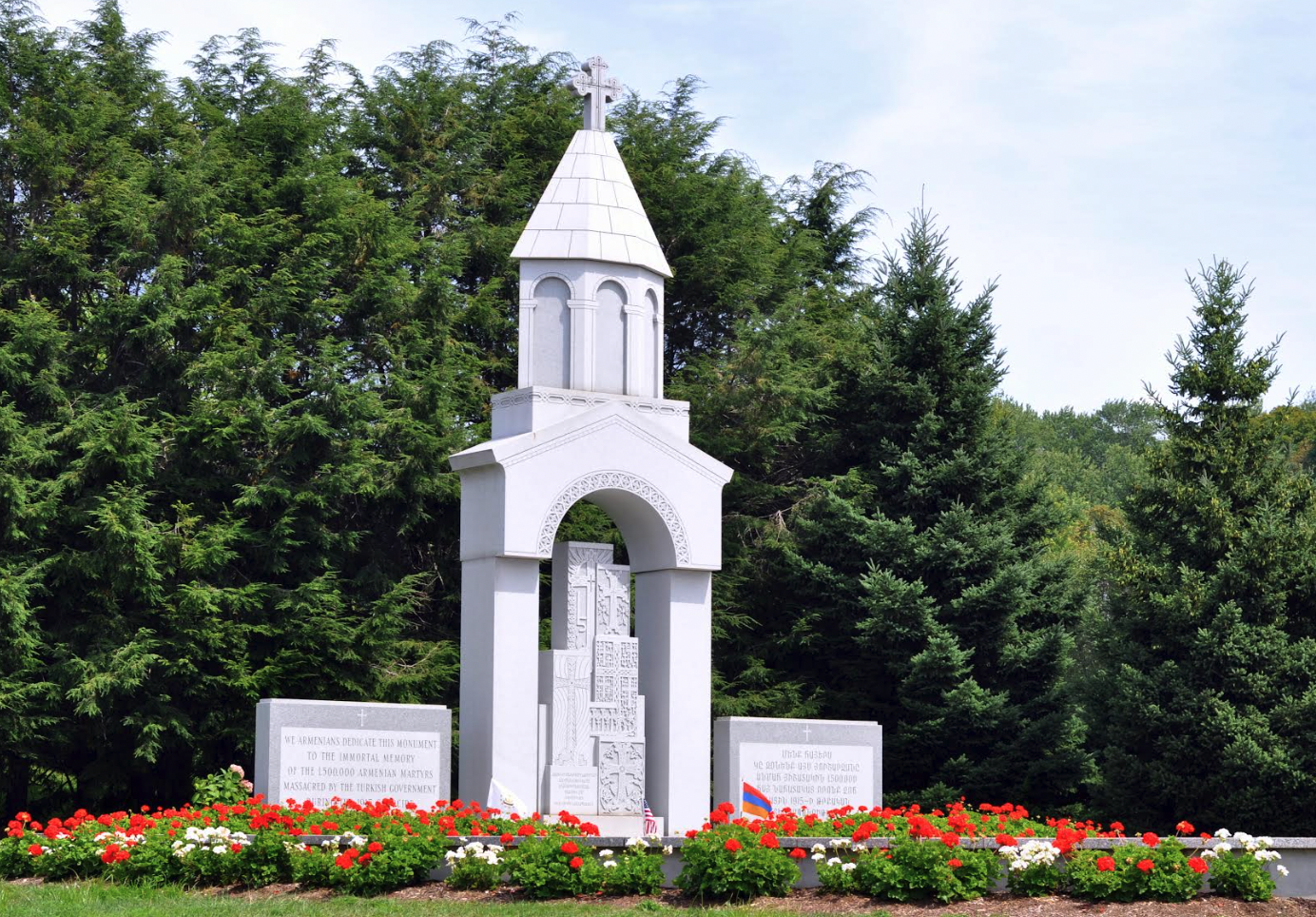
Armenian Martyr’s Memorial dedicated on April 24, 1977 at the North Burial Grounds, Providence (Author’s collection)
Destination Rhode Island: The Different Armenian
Unlike any other ethnic groups who settled in Rhode Island, those Armenians who came did not follow the typical pattern of European families who assembled at a single port of their country with their baggage and household effects. The peoples of European immigration looked to economic opportunities in America and whole families uprooted and left together to look forward to the possibilities for a better life in America. This is not to say Europeans were well off. They too had dismal financial outlooks, but they left their homelands more so because of deteriorated economic conditions and they typically left in groups of relations.
The Armenian was different. He or she had witnessed a tragic genocide where over one half of the entire Armenian population was either massacred or marched off into the Syrian deserts to die. Most of those arriving in Rhode Island came neither as families nor with husbands or wives. They arrived from the four corners of the world, separated and dispersed as individual survivors, along with physical and/or psychological scars. They had lost everything including, fathers and mothers, spouses, siblings and even their own children. What they possessed on their arrivals were their Armenian language and a fierce drive to succeed and start a new life. All had a conviction to grasp and hold onto their Armenian identity while making a home in a new country and learning to speak English. He or she was more likely single, an orphan whose family was either dead or lost. As doors opened for immigration to America, many came with Providence, Pawtucket or Central Falls targeted as employment destinations.
Some immigrants identified with American Church missionaries headquartered in Rhode Island. This was particularly the case with Park Place Congregational Church of Pawtucket that as early as 1830 began placing missionaries in central Turkey. The missionaries translated the Bible into modern Armenian and may have influenced the first Armenian Protestant immigrants at the turn of that century to associate with Rhode Island.
The Beneficent Congressional Church on Weybosset Street in Providence also established schools and a college in the village of Harpoot in Turkey. These early Armenians had also left their homeland to flee the effects of persecution and oppression from the Turkish government and felt free to express themselves religiously and culturally. It is also assumed that the handful of early professionally oriented students who came to study in Rhode Island schools were influenced by both the Park Place and Beneficent missionaries.
Armenian immigrants often settled in an Armenian settlement or “house of safe-haven” with men from their own villages living in double and triple story houses. Often 20 to 30 men lived in single and double rooms until they found jobs and could afford housing elsewhere. The conditions were most likely deplorable, deprived of general luxuries in order to save money to prepare for their next steps up the economic ladder or to send money back to surviving relatives outside the country. Most of these apartment/flats were located in the Smith Hill section of Providence near Douglas and Chalkstone avenues, as well as the surrounding side streets.
The first group that lived and shared housing together were a group of male “Palutzee’s” (from Palu district) who lived on Orms Street. They all shared household chores including cooking and cleaning. Another common house was also known to exist on Washington Street. On Derry Street in Smith Hill, three houses (Koshmat, Sarket and Negrat) stood together with a single person assigned to each house to clean and maintain the quarters while the residents went off to work.
The “Bahgin” villagers maintained a house on Codding Street. One group later moved to 433 Chalkstone Avenue. All were first licensed by the City of Providence as “Educational Societies” and a stamp of officialdom in the name of each house was issued from City Hall. Men living there as a commune were informally assessed weekly dues in addition to room and board. Meticulous kept records reflect the rent monies collected and sent back to their homeland villages.
Providence was not the only city where communal houses were operated. Nishan Avedesian, as a twelve-year-old boy from Kharpert, was tagged and sent to America by his mother when the genocide began. Arriving at Ellis Island he was first sent to Worcester where contact was made with a relative living in Pawtucket. Arrangements were made and he was sent immediately to Pawtucket to a house located off Roosevelt Avenue where the relative lived with other men. Being the youngest household member, he was delegated to clean and cook while others went off to work.
There are also references to another common house which was in use in East Providence during the early 1920s. It served partially as an Armenian club and also used to house bachelor immigrant workers.
Means of arrival into Providence varied. Most journeyed by ship to New York and Ellis Island and from there by train to Providence. Others by ship came directly into the Port of Providence which was located in the area that is Allens Avenue around the vicinity of present Point Street Bridge. There was a scheduled ship service to and from Boston and New York with stops at New Haven and Bridgeport.
Some ships came directly from Europe into Providence. Established in 1911, the Fabre Line, a French Steamship company of Marseilles, France, turned the Port of Providence into one of the major immigrant arrival destinations in America. Among the various immigrant groups, many Armenians arrived via the Fabre Line. Records of immigrants and the ships they sailed on that arrived in Providence are available for review on microfilm at the Rhode Island Historical Society.
Some passengers after debarkation from ocean liners in New York City were placed on ships of the Fall River Line, with scheduled runs back and forth between Providence and New York City. Many came by train and were helped by Travelers Aid, an organization established inside Union Station in Providence to assist immigrants who could not speak English. Armenian volunteers moderately fluent in English helped staff Travelers Aid. The Armenian Red Cross (ARS) volunteer telephone numbers were available for any Travelers Aid assistant to contact an Armenian speaking person. Additionally, the International Institute, located first at 37 Weybosset Street and later at 141 Weybosset Street provided assistance to any foreign arrival.
The early Armenians before and around the turn of the twentieth century had mostly arrived to find work and then return with the earned monies to bring back relatives. Those who stayed sent funds back to relatives outside the country. Yet there were others who were the refugees from the 1896 massacres. There are instances, during the period between 1900 and 1902, where very young Armenian orphans were housed in the Children’s Friends Society Orphanage on Tobey Street in Providence.
Reflections of Arrivals
Settling first on Smith Hill in enclaves with other former villagers, Armenian immigrants then married, raised families and opened businesses. As with other European immigrants, they forged reputations as industrious participants in a city immersed in the 1900 Industrial Revolution. Electricity had arrived and public transportation of horse drawn trolleys were operational. Providence, Pawtucket and Central Fall were in dire need of factory workers. There was a large immigrant Irish population that worked in the factories and resentment by these workers was expressed toward the new foreigners who could not speak English. But the factory owners who sorely need workers competed for any class of labor. At the Port of Providence men were interviewed and hired as they walked off arriving ships. Many had other destinations in mind, but an immediate job convinced them to stay and live in Providence.
Hovaness Aprahamian arrived one day as an immigrant and went to work the next. When his ship came into Providence, on deck were the foremen of various factories recruiting immigrants. Aprahamian happened to stand in the line for the American Screw Company and was given a piece of paper with an address of where to report to work.
It was during this period of industrialization that a strong Armenian foothold was established. In Rhode Island, jobs, entrepreneur opportunities, imagination, and dedication through hard work were hallmarks of the Armenian community. These immigrants carved out a place to live and raised families in Providence and the surrounding communities.
It was also during the same 1930 –1940 period where the intensive touch labor jewelry industry was successfully established and flourishing in Providence, in addition to the textile mills of Pawtucket, Woonsocket and Central Falls. Most every immigrant had at least one experience working in a jewelry manufacturing shop. The jewelry shops also provided women an opportunity to make a wage no matter how little they were paid. Armenians who worked in these shops learned the manufacturing techniques and seized opportunities to start their own shops. The movement materialized into a respectable number of Armenian owned enamellers and jewelers founding manufacturers and electro/chemical plating companies. By 1934 some twenty-seven-jewelry related business were operated and owned by Armenians. Some of these start-up companies became highly successful and continue today operated by family heirs.
As the Armenian community expanded, a large number of stores of varying type appeared, located in South Providence, bordering Plain, Broad, and Eddy streets and into the Potters and Elmwood avenue districts. This region eventually had 60 Armenian owned businesses over a fifty-year period. On Broad Street alone, 36 businesses existed at one time or another. Some remained in operation under the same ownership for fifty to sixty years, although the average was thirty years or less.
The distribution of Armenian families in Rhode Island in 1934, as extracted from city directories, indicates the population within the cities as follows.
Area and Number of Families
Providence, 1,395
Pawtucket & Central Falls, 276
Cranston, 127
East Providence, 111
Woonsocket, 51
North Providence, 25
Other, 39 (Johnston, Warwick, Newport, Pascoag, Narragansett, and Wallum Lake)
A number of separate neighborhoods within each city existed. In Providence for example, there were at least 6 distinct suburbs, which could be considered Armenian conclaves. The Douglas Avenue/Smith Hill sector was by far the largest and most concentrated. For example, a tight cluster of 26 families lived on Camden Avenue between house numbers 35 and 202. First Street, Burgess Avenue and Prospect Street were the conclaves in East Providence. In South Providence, it was a broader distribution and took in side streets along Plain Street, Prairie Avenue and Broad Street. In Cranston, it was the small neighborhoods of Edgewood and Arlington. Pawtucket’s Japonica, Carnation, Cole and Woodbine streets were, in reality, satellite reflections of the other Armenian neighborhoods.
Members of this generation of Armenian immigrants also fiercely held onto their Christian religion, language and 3,000-year-old culture. They founded the present Armenian churches and schools to preserve their faith and heritage, even while taking every opportunity to contribute as meaningful citizens in the growth of Rhode Island. Fearful that their identity would be lost, first generation children born here in Rhode Island universally were taught to speak their parent’s native tongue, an effort that is still practiced with many of the third and fourth generation descendants of immigrants today.
The small Armenian community of Rhode Island in some instances is no different than the other ethnic communities, which make up 70% of Rhode Island’s population. Ethnicity remains the tattoo and binding adhesive of many Rhode Islanders. Without identity, there is no pride. Without accomplishments, there is no satisfaction. Without heritage, there is no passage of culture.
But for Armenians, this intense attitude of not forgetting one’s roots, preservation of history, culture and the stories of those that came and thrived have always remained a passion. For Armenians, there is a belief that they have more at stake in preserving their heritage than most other nationalities. Remembering their roots and never forgetting the modern world’s first genocide was the challenge of the early immigrants and it has been passed on to each next generation. For decades, wherever Armenians collect, they still continue to remind themselves not to forget, not lose even the smallest portion of identity, even as the inevitable and natural homogenizing occurs as a result of mixed marriages.
Rhode Island’s Armenian Who’s Who
For over 100 years, which includes four generations, Armenians have chiseled their identity into Rhode Island’s history. Within this Armenian community, three churches, and fifty to sixty organizations of political, religious and cultural nature have been established. Business entrepreneurs, politicians, entertainers, professionals such as doctors, lawyers, judges and educators, have abounded. The individual standouts are many and serve as the basis of Armenian pride. Rhode Island has no shortage of those who have been admired by their peers whether they immigrated, are native to or have resided in the state.
In the early years, it was the organizers who became the “notables”—the men and women who established the churches and schools. They bonded together in political parties arguing the rights and wrongs of the “Armenian Question.”
These individuals who arose as leaders were mostly strong vocal men and women who also competed in the chaos of a surging industrial America that generally looked down upon foreign speaking immigrants. With all their frustrations and limitations of establishing themselves in the American community, it was almost natural for them to take leadership roles within the Armenian circles. In essence, there were two underlying motivations. First, there were no language barriers and the strong sense of Armenian identity coupled with the problems of homeland events drove them to participate in international Armenian politics. Secondly, they recognized need to preserve religious and cultural traits, which in turn fueled the furnaces of those aspiring to establish Armenian churches and schools.
Much credit is due to the various religious leaders of the churches in Providence. Not only were they looked upon as spiritual leaders, they in fact laid down the moral disciplines and molded the national cultural aspirations of the Armenian population. Some remained in Rhode Island with extended service and bonded Armenians to their heritage as well as their religion. Without these men and women, Armenian identity as we know it would not be in existence.
Some of the most prominent religious leaders were Reverend Arsen Goergizian, who served the Euphrates Evangelical Church for 14 years; Archpriest Haik Donikian, the pastor of St. Sahag and Mesrob Church for 22 years; and Dr. Reverend MesrobTashjian, who served at Sts. Vartanantz Church for 37 years. Donikian had an illustrious career serving his Diocese in many churches throughout America. Tashjian was a spiritual leader, author, poet, radio personality and historian. Another priest, and a genocide survivor, Reverend Nishan Papazian, also served for an extended period as pastor of Sts. Vartanantz Church.
It is impossible to identify all those who carved out their destinies with success. This is particularly the case with those in business. So many entrepreneurs in small shops and businesses established themselves and then prospered while raising families, buying homes and supporting their churches and organizations. For example, during the period between 1930 and 1960, a sizable market area existed in Hoyle Square. Bound by the junction of Westminster Street and Cranston streets to the west, Dean and Summer streets to the east, Washington Street to the north and Broad Street to the south, this area alone included a multitude of sixty Armenian-owned businesses comprised of tradesmen, proprietors, vendors and merchants. It remained as the largest concentration of Armenian-owned shops in Rhode Island during that thirty-year period.
More significant was the aura of camaraderie of owners and visitors. It was not uncommon to see a constant flow of Armenians coming in and out of the shops conducting Armenian church or political business of the day. It was from these shop owners and others like them where the early leaders of the Armenian community emerged.
Tovmas Charshafjian in his introduction to “How the Hairenik (newspaper) Was Born” (May 1979 Armenian Review) correctly describes how the small Armenian business locations were the communicators of the community. “An Armenian tailor shop could always be found in those days in any large community of Armenians in the United States along with Armenian barbers, grocers and bakers. These stores served as forums of the Armenian community, for the ‘hot-stove’ discussions on community affairs, including business matters relating to Armenian political, national and religious business.”
Armenian business pockets in Hoyle and Onleyville Square, Dean Street, Canal Street, Douglas and Chalkstone avenues and in South Providence were the impromptu meetings places where issues were weighed, and determinations made that affected Rhode Island’s Armenian community. Pawtucket, on a smaller scale, had a similar scene. A dozen or more shops and Armenian Clubs along Japonica Street and Broadway served as the “internet” grapevine of Armenian communications and from them the activists stepped forward.
One immigrant who came to Rhode Island in 1922 was Alex Manoogian, founder of what would become the giant Masco Corporation (makers of Delta Faucet) based in Detroit, Michigan, and a worldwide philanthropist. He had contacted Nerses Nersessian in Providence who arranged a job for him. Although he lived part-time with the owners of Nahigian Tobacco Company in Hoyle Square, his affinity for machinery and innovation was nurtured with his work in Harutiun Adjemian’s machine shop and in the laundry business “Purity Laundry,” the largest laundry in Rhode Island that was owned by another Nahigian.
The Next Generations
Those early businessmen evolved into leaders by their sheer determination and the recognition of community need. They rose up to the occasion, as it demanded. Many others aspired and also achieved public notoriety, but it was the first generation (Rhode Island born) where was witnessed the rise of a contemporary and different breed of leaders. These more modern leaders made significant impressions in professional and business ventures. As their accomplishments were noted, their prestige was enhanced, thereby standing out more predominately in both the Armenian community and in America at large. This transition began to take place in the 1930s and by the time Word War II had ended in 1945, young Armenian Americans had very firm objectives in life and took steps to achieve them. They were no longer latched to the Armenian neighborhoods, and they grasped opportunities that abounded all around them. Higher levels of education were attainable and diversified technical instruction was available—of which were taken advantage. It was a much different outlook, and many did not want to follow their fathers into barber shops and shoe repair stores. They accepted challenges in diversified fields of endeavor and began competing with their contemporary American peers.
Who’s Who
The following people and businesses represent that period of time and generation who took major steps toward excellence in their respective fields and gained public recognition. In almost all cases, they are first or second generation Armenian-Americans. Scattered through the listings are some earlier Armenians who were outstanding. Many have been omitted only because their feats and accomplishments have been forgotten by the passage of time. Many records exist identifying names of office holders in organizations. However, their specific deeds have not been documented and may be known only by family descendants.
By far the most public and visible Armenian celebrities are those politically involved.
Mayor Scott Avedisian of Warwick after his election in February 2000 found himself surrounded with Armenian-American supporters. For him, the demonstrated attention was a re-birth of his heritage which he proudly proclaims. He served as mayor from 2000 to 2018. Presently he is Chief Executive Officer of the Rhode Island Public Transit Authority.
Aram Garabedian served in the Rhode Island House of Representatives; the Rhode Island Senate; and the Cranston City Council, of which he was president from 2005 to 2008. Throughout his career, he not only advocated Armenian issues, he became the voice of the Armenian community at most public events and ceremonies. Always ready to help any Armenian cause, Garabedian covered the state and was instrumental in leading and convincing individuals, groups and organizations to remember their roots. A successful businessman and philanthropist, he still stirs the Armenian community with his prominence. He was elected to the Rhode Island Heritage Hall of Fame in 2012.
Another unique individual was Alfred Scott, of Scottish and French descent who resided in Providence and later in Cranston. By 1968 when illness overtook him, he had studied Armenian culture and history for over 35 years. He learned to speak, read and write the Armenian language in both modern and classical form. As a historian he pursued Armenian history, found new evidence’s including the fact Armenians were the first to lead the famous wars of the Crusades before any other nation. His findings predated the first Crusade to recover the “Holy Land” by the French in 1096 A.D. by 470 years. He authored numerous articles for both Armenian and English papers, spoke on historical findings and was cited by the Armenian Catholicos of Etchmiadzin. He was an illustrious celebrity who knew more about ancient Armenian history than any other person in New England. Scott was a prolific communicator and circulated about the Rhode Island Armenian community making friends and collecting information. Rhode Island Armenians nick-named him “Baron Scotian.”
As time continued to march ahead, more notables not only emerged, but surpassed the accomplishments of those before them. The Armenian Masonic Degree Team has begun to recognize individual achievements in an attempt to bring to light and public attention those who exceled.
The Armenian Masonic Degree Team of Rhode Island. Organized in 1973, it has annually honored the Rhode Island Armenian man/women of the year who exemplifies the successful contribution of public service. Past honoree recipients, each of whom has a substantial Rhode Island connection, include:
1975 Aram A. Arabian, Esquire, Public Defender, State of Rhode Island.
1976 Dr. Vahe M. Pahigan, M.D., Surgeon
1977 Harry Kizirian, U.S. Postmaster, Providence
1978 Jacob Hagopian, Magistrate U.S. District Court, Rhode Island
1979 Nelly Ayvasian, Executive Director, International Institute, Rhode Island
1981 Haigunush Bedrosian, Associate and Chief Justice, State Family Court
1986 George Keverian, Speaker of the Massachusetts House of Representatives
1987 Rouben Gregorian, Conductor and Musicologist
1988 Dr. Aram V. Chobanian, Dean of Boston University School of Medicine
1988 Harry Kizirian, U.S. Postmaster, Providence
1989 Julia Tashjian, Connecticut Secretary of State
1989 Dr. Vartan Gregorian, President Brown University
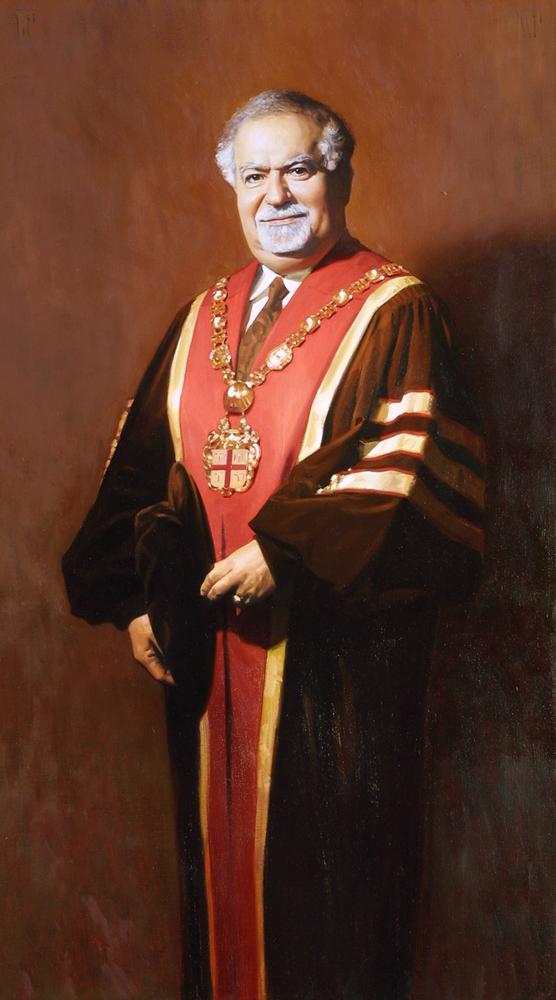
Vartan Gregorian, President of Brown University from 1989 to 1997 (Brown University Portrait Collection)
1990 Dr. Lucy Der Manuelian, Professor of Fine Arts, Tufts University
1990 John Nazarian, President of Rhode Island College
1991 Phillip Terzian, Editor, Providence Journal
1992 Russell Gasparian, Director of the Armenian Radio Hour
1993 Louis M. Najarian, M.D. Adult and Child Psychiatry
1994 Aram G. Garabedian, House of Representative, Rhode Island
1995 Herman Ayvazyan, M.D. Internal Medicine
1996 Konstantine Petrossian, Maestro, Composer & Conductor
1998 Jack & Rose Hagopian, Founders Ro-Jack’s Food Stores, Inc.
2001 Jeremiah S. Jeremiah, Jr., Chief Judge, State Family Court.
2002 Martha Aramian, Creator of Armenian Heritage Park
2003 Lillian and Varkis Markarian, Community Service Benefactors
2018 Scott Avedisian, Mayor of City of Warwick
2020 Katherine Kazarian, House of Representatives, Majority Whip
2020 David Tikoian, State Police Superintendent, State Senator
Rhode Island Heritage Hall of Fame
At the State level, the prestigious Rhode Island Heritage Hall of Fame organization sifts through thousands of candidates who exemplify the best in Rhode Island. It inducts few. Founded in 1965, it was established for the purpose of spotlighting the contributions of those, whose efforts were made while residents of this State and those, who adopted Rhode Island as their home. Eight Armenian Americans have been inducted, who from a percentage point of view compared to the overall population of the state, likely exceeds any other substantial state ethnic group.
Nelly Ayvasian, Executive Director, International Institute
Harry Kizirian, U.S. Postmaster, Providence, RI
Aram G. Garabedian, State Senator
Aram V. Chobanian, Dean of Boston University School of Medicine
Vartan Gregorian, President, Brown University
Haig Varadian, Educational Administrator, Cranston School Department
John Nazarian Ph. D, President, Rhode Island College
Edward Zacharian (Eddy Zack), Country Western Musician
Below are Listed Past and Present Notables of Armenian Descent
Each of Them has a Strong Rhode Island Connection (even if not stated)
Artists
Abraham Shoushanian. Cranston resident whose paintings, post cards and sculptures have caught the imagination of many. A blacksmith from Jerusalem, born 1890. Arrived in the U.S. in 1957 after being convinced by his son to immigrate. Some one hundred of his paintings are now in Rhode Island.
Joan Thompson Boghossian. Newport native and Pawtucket artist with more than fifty awards including first prize at more than twenty open shows. Self-taught, she paints in oils, watercolor and sand monotypes.
Arman Manookian. Immigrant from Constantinople (now Istanbul, Turkey) who settled in Providence and attended the Rhode Island School of Design. Considered Hawaii’s most celebrated modern art painter, she was once the featured illustrator of the U.S. Marine Corp’s “Leatherneck Magazine.”
Sarkis Bezigian. Warwick native. He was a quality classic ship model maker. His creations are accurate in detail and considered by the U.S. Navy as “high refinement model reproductions of museum quality.” His pieces are on display at various military museums and institutions, including the Smithsonian Institute.
Berge Zobian. Photographer, owner of “Gallery Z” brings to Rhode Island unique collections of Armenian art and artists. His exhibitions and special showings have added a new dimension to Armenian culture.
Earle Melikian. Photographer who captured generations of Rhode Island schoolchildren on film. Known as the states most prolific school photographer of black and white photographs, beginning in 1930 at Gray Studios on Washington Street in Providence.
Businesses
Purity Laundry. Owned by the Nahigian family, this Providence located laundry was the largest laundry company in the state for many years.
Newport Auto Center. Richard Gudoian, founder and owner of dealerships importing foreign cars beginning in 1969, became the largest auto dealership in the Newport area. He was also the owner/manager of the Middletown Tradesman Center.
Najarians 5 and 10 cent Stores. John Najarian, founder of stores located in Pawtucket, Olneyville Square and Woonsocket.
Kolligians 5 and 10 cent Store. A landmark department store located in the famous Hoyle Square market area. It remained an icon for many years as one of the more successful businesses in the square.
RoJacks. Ro-Jacks Food stores established by Rose and Jack Hagopian in 1954 and identified by combination of their first names. Originally started as a pushcart business with his father in Smith Hill neighborhoods of Providence in 1932. The family owned and managed operation turned into thirteen large supermarkets in Rhode Island and Massachusetts by 1998 with 2,000 employees.
Christmas Tree Shops. Armenian owned specialty gift stores of Charles Belzinkian, becoming a chain of 28 stores in New England.
Concordia Mfg. Company. Textile mill originally owned and operated by John Boghosian II in Pawtucket. The mill was relocated to Coventry and operated by the son, John Boghosian III.
Royal Electric Supply Company. During World War II the Navy’s Quonset huts, were equipped with electrical units designed and produced by Royal Electric. Distributor of RCA phonograph records. Krikor, Edward and Zareh Egavian, three brothers, operated the business. The Egavian Foundation endowed the cultural center at St. Sahag & St. Mesrob Church.
Dodie Kazanjian. Vogue Magazine editor and writer. Press Secretary to President Ronald Regan and writer for the Washington Post.
Gus (Berberian) Barber. Founder and CEO of Barber Food Products, the Maine-based “Barber Chicken” food products distributed worldwide.
Japonica Partners. Paul Kazarian, owner/manager of Oster products and promoter of business opportunities geared to undertaking proactive “value gap” investments and management of very large firms.
Alex and Ani (Carolyn Rafaelian). Founder & Owner Carolyn Rafaelian, multi-millionaire jewelry manufacturer, in 2012 purchased and then restored Newport’s Belcourt Mansion and purchased Sakonnet Vineyard Winery in Little Compton, renaming it Carolyn’s Sakonnet Winery.
Jack Leylegian. Advisor/Consultant in President Kennedy’s administration, U.S. Attorney General Office, and later President and CEO of the famed Dreyfus Management Mutual Funds.
Community
Grant Dulgarian. Advocate of handicapped children, Boy Scout leader and businessman. Chairman of the Rhode Island Association of Retarded Children, President of the Cranston Center of Retarded Children. Awarded citations for distinguished service by the National Court of Honor Boy Scouts of America. Past President of Armenian Students Association.
Richard Shadoian. Former Superintendent of Schools in North Providence. Dedicated educator, he served in the North Providence School Department for over 40 years. He participated in many community organizations, including the Rotary Club, Lion’s Club, Ocean Ridge Civic Association, Boy Scouts, NP Teachers Credit Union, and NP Boosters. Active in Democratic Party politics, he managed many campaigns, and was an elected member of the North Providence Democratic Town Committee.
Edward Avedseian. Born in Pawtucket, a clarinetist musician with the Boston Pops Orchestra also pursued and invested with equity-investments placing him as a major philanthropist. His gifts to Armenian schools, Rhode Island colleges and nursing schools and more recent $100 million grant to Boston University’s medical school reflects his successful career.
Martha Aramian. Benefactor, philanthropist and supporter of Armenian culture, heritage preservation and education both in Rhode Island and in Armenia. Family founding member of the Armenian Heritage Park on Douglas Avenue in Providence, donated in 1995. Also donated by Kazar and Nevart Aramian. The inscription on the monument at the park reads (periods added): “Armenian Heritage Park. A Tribute to our Forefathers who Searched for Freedom and Human Dignity Heritage Culture Tradition. Wherever Armenian is Spoken or Written Armenia Lives.”
Harry (Movsesian) Burt. Successful businessman and philanthropist, one of the first Armenians to establish a jewelry finding business. Built, and donated to, the Armenian community in Miami both a church and a convalescent center.
John Takian. President, Shriners of Rhode Island 2002, and past member of the Trustees of Sts. Vartanantz Church.
Ani Haroian. She served in the offices of U.S. Senator Sheldon Whitehouse, State Attorneys General Peter Neronha and Peter Kilmartin, Providence Mayors David Cicilline and Angel Tavares. She served as a leader in the Armenian National Committee Rhode Island Chapter for over 40 years.
Attorneys
In the year 2000 forty attorneys of Armenian descent were practicing in Rhode Island. Here are a few notable ones.
Aram Arabian. Attorney, lecturer, bar reviewer. Considered a “lawyers’ lawyer.” Brilliant, compassionate, leading lawyer and Rhode Island’s first “Public Defender.”
Richard Casparian. Two decades as legal representative of the state’s most heinous charged criminals. Cranston resident holding public office beginning in 1974. Captivating trial lawyer, known for holding juries spellbound. Named man of the year in 1965 and inducted into the Cranston Hall of Fame Foundation in 1986.
Henry Tarlian. Superintendent of Schools, Warwick. 1995; sixteen years of community service, Warwick Rotary Club award. A total of 39 years in the Warwick school system.
Charles Shadoian. Principal at North Providence Centerdale High School from 1972 to 1999. He developed a reputation for being stern, caring, and effective. Cited by the Rhode Island legislature as a respected, honorable administrator who completely immersed himself in his work and diligently strode to make a difference.
Marie Kojian. Principal, Meadowbrook Elementary School East Greenwich for five years. Gym teacher for 21 years in Narragansett school system.
Richard Magarian. Coventry High School Principal, teacher, wrestling coach, 23 years as Vice Principle, and 34 years at the Coventry school system.
Zenas Kevorkian. Director of adult education, history teacher, math, general science and journalism teacher; 25 years in Cranston school system, Roger Williams College 1951-1955 and Rhode Island College 1966-1973, U.S. Navy Ship Commander during WW II, President of National Association of Public Educators, Cranston Historical Society, ASA, Masonic Team, Deacon of Euphrates Evangelical Armenian Church.
Richard Zorabedian. Instructor, historian and author. Taught at the University of Rhode Island and the University of Buffalo. Appointed to the Rhode Island State Board of Regents for Education. Awarded an Honorary Doctorate from the University of Rhode Island. JFK Award from Rhode Island College, Providence School Committee, founding member of the Providence Civic Center, Providence Mayor’s Recreation Advisory Board, Providence Parents and Teachers Award, Rhode Island Board of Regents Award. Served as a tail gunner in World War II.
Entertainment and Media
Eddie Zack and the Hayloft Jamboree.
Eddie Zack (Zacharian) started his country music career at the age of sixteen with his brother Richie (known as “Cousin Richie”) and in 1939 was joined by their two sisters, Babs and Maril. A radio career began in 1947 and later with NBC he was heard on 128 stations coast to coast. Zack recorded 80 songs with Columbia, Decca and Crosstown records. With three hundred television shows behind them, the Hayloft Jamboree celebrated 60 years in country music in January 1999. The group has the distinction of being the first country music group to perform at Boston’s Symphony Hall. Eddy Zack was inducted into the Rhode Island Heritage Hall of Fame in 2003.
Kim Kalunian. Kim is a reporter and co-anchor of 12 News. Before arriving at WPRI in 2015, Kim worked as the drive-time news anchor on News Talk 630 & 99.7 FM WPRO and as a staff reporter at the Warwick Beacon, Cranston Herald and Johnston Sun Rise newspapers. Kim was also professional stage actress and is a proud member of the Actors Equity Association.
George Paloian. Actor, recording artist, Broadway performer in productions including, Irma La Douce, The Merry Widow, Madam Butterfly, Kismet and Desert Song.
Chuck (Charles Abajian) Stevens. Legendary disc jockey who during the 1950s ushered Rock & Roll music into Rhode Island on radio WRIB and later with radio WICE. East Providence native who was loved and hated by fans and always had a crowd around his studio. He brought a number of nationally known music personalities to perform in Rhode Island.
Russell Gasparian and the Armenian Radio Hour. The longest-running ethnic radio broadcast show in the nation, Gasparian’s radio show completed 75 years in 2022. It has been the beacon for news, music and current events for the Armenian community in Rhode Island and southern New England since 1947. Gasparian’s broadcasts started from WRIB inside the Narragansett Hotel in downtown Providence in 1947. The program broadcasts “live” every Sunday morning. Since its inception, the voice of the Armenian Radio Hour has been Gasparian and later supplemented with his daughter Sonya as co-host. Inducted into the Museum of Television and Radio in New York in December 1996. He has been honored by the Armenian Martyr’s Memorial Committee, been given the “Keys to the City” of Providence and was named Rhode Island “Armenian of the Year” in 1992.
Konstantin Petrossian. Music Maestro, composer, pianist, and conductor. He was Conductor of the Armenian TV and Radio Orchestra. From 1985 to 1990, Petrossian became Director of the Music Information Department for the Union of Composers of Armenia. Works include symphonic poems, vocal symphonies, choristers, chamber music for movies and theaters, and over ninety recordings of his own music. Had given over 300 performances in the Soviet Union and 50 other countries before coming to Rhode Island. Petrossian served as Director of the Armenian Music Festival of Rhode Island, Inc., organized in 1997, Cultural and Music Director of St. Sahag and St. Mesrob Armenian Church and Artistic Director and Conductor of the Armenian Chorale of Rhode Island since 1995, and the Armenian Chorale of Greater Worcester (MA) since 2000. In 1996, named “The Armenian of the Year.” In June 2014, he received the prestigious Sts. Sahag and Mesrob Medal, one of the highest honors of the Armenian Apostolic Church, accompanied by an encyclical from His Holiness Karekin II, Supreme Patriarch and Catholicos of All Armenians, in recognition of distinguished achievement in service to the Church and Armenian culture.
Paul Kanarian. Founder of the 1954 Armenian Community Chorus of Rhode Island.
Ara Bagdigian. Metropolitan Opera singer.
Harout Diarbian. Documentary video and film maker, Creator and Executive Producer of “Armenian TV Time of Rhode Island.”
David Hedison. Native of Cranston, celebrity actor in film and television. Starred in New York stage shows, then the Hollywood films “The Enemy Below”, “The Fly”, and “James Bond” films. TV appearances included “Voyage to the Bottom of the Sea”, “Five Fingers”, and “Another World”.
Columbus Theatre. John Beberian and Family. Adult movie house and film festival promoter located on Broadway in Providence, built in 1926 and bought by the Beberian family in 1962 and kept open with stage shows, operas, second and third run films. In later years featured mainly adult X rated films. Renovated theater in 1968 because of successes. Walled off the balcony with 200 seats for use in showing legitimate art films. Awarded Rhode Island International Festival August 2002 feature theater.
Mae (Movsesian) Adams. For sixteen years from 1950 to 1966 under her previous married name of “Keighley”, she authored the Providence Journal’s Food Section.
Avon Cinema. Owned and operated by Kenneth Dulgarian, located on Thayer Street on Providence’s East Side. Built in 1920 and remodeled by Dulgarian it serves the entire Rhode Island community as a popular cinema showing foreign, special and offbeat films.
Pamela Watts. Former Channel 12 TV WPRI news anchor, URI, WPRO radio, news reporter for radio WEAN, WRKO Boston anchor, Colony Communications local cable, 1984 WLNE Channel 6 TV reporter and anchor. Received Emmy for best news anchor two years in a row. Received Armenian National Committee award for promoting Armenian causes. In 2021 she joined the Rhode Island PBS Weekly team as reporter and co-host.
Jeff Derderian. Former television news reporter, WLNE Channel 6 TV, WPRI TV Channel 12 and six years in Boston at WHDH-TV, Edward R. Murrow award winner. Co-owner of “The Station” nightclub, site of perhaps the worst fire in Rhode Island history in 2003.
Diane “Olga” Postoian. Dedicated Director of the Looking Glass Theatre, New England’s oldest participatory theater for children touring communities visiting 300 schools and 100,000 students per year. With purpose to promote literacy, sense of purpose, social issues and awareness of culture. Founded in 1962, one of the nation’s oldest types, Postoian’s passionate sense of children’s needs have made the roving theatre a welcome Rhode Island asset.
Thomas A. Ohanian. Cranston native, two-time Emmy and Academy Awards winner, Chief Editor Avid Technology, Composer digital editing system, Academy of Motion Picture Arts and Sciences Award 1994, and Emmy 1993 for co-invention of Avid Media Composer, film editor, inventor, director, writer and producer.
Joanne Mouradjian. Assistant Professor of Music, Wheaton College, Soprano soloist in ten languages in varied genre including recital, oratorio, operetta and chamber music. Special interests in baroque, classical, Armenian song literature, and musical theatre repertoire.
Ben Bagdikian. Pulitzer Prize-winning journalist, Ben Bagdikian is one of the most respected figures in American journalism. He has been a professional newsman since 1941. Started working for The Providence Journal Bulletin as a reporter in 1947. He was eventually promoted to foreign correspondent and chief of the Washington Bureau. In 1970, he became assistant managing editor of national news at The Washington Post. He went on to teach Journalism at the University of California in Berkeley. He became Dean in 1985 and Dean Emeritus in 1991. Bagdikian has received numerous honors and awards throughout his career and has contributed articles to publications including the Atlantic Monthly, The Nation, The New York Times Magazine, and The London Times.
Philip Terzian. Columnist, former Editorial Page Editor for the Providence Journal Bulletin since 1989 and Associate Editor working out of Washington, DC. A vocal advocate of Armenian rights. His circulated columns frequently criticize Turkish denials of the genocide. During the Carter Administration, Terzian spent a year writing speeches for Secretary of State Cyrus Vance. A columnist with the Knight-Ridder/Tribune News Service. He is also a contributing writer for The Wall Street Journal, The Weekly Standard, The American Spectator, and the New Criterion. Additionally, he often appears on Washington Week in Review, Fox News, and public affairs programs on C-SPAN.
Medicine
Dr. Aram Chobanian. Dean, Boston University School of Medicine for over fifteen years. He attended Harvard Medical School and is an award-winning heart specialist with over 250 peer-reviewed articles on basic and clinical research in cardiovascular diseases. A Pawtucket native, he is a recipient of both the Rhode Island Heritage Hall of Fame Award and the Armenian of the Year Award. The Armenian Students Association awarded him the Kabakjian Science Award.
Dr. Vahey Pahigian. University of Rhode Island and Tufts Medical School. He was a U.S. Army veteran, serving in the 3rd Army Medical Corps during World War II as a field-hospital surgeon. Dr. Pahigian was the former Chief of General Surgery at Women & Infants Hospital and consulting surgeon at Rhode Island Hospital.
Dr. Arshag Margosian. An early family doctor in Providence who opened practice in 1901. He was a competent, respected physician and human being, who provided free health care to needy Armenians. He died poor and was buried by monies collected from the community. He was the first editor of the newspaper Bahag, published earliest in Providence. This newspaper later became the Baikar Daily of Boston.
Judiciary
Jacob Hagopian. Appointed Magistrate Judge in 1964 by Judicial Council of the First Circuit 1995, U.S. Supreme Court. U.S. District Court District of Rhode Island and Eastern District of Virginia, U.S. Court of Appeals District of Columbia Circuit, U.S. Court of Customs and Patent Appeals, U.S. Court of Federal Claims and U.S. Tax Court. Appellate Judge, U.S. Court of Military Review 1967-70. Former Director, Roger Williams College Law Center. Visiting Professor U.S. Naval War College 1993. Adjunct Professor, Suffolk University Law School. Awarded U.S. Legion of Merit by direction of President for judicial and legal service to government and U.S. Legion of Merit First Oak Leaf Cluster for duties as Appellate Judge. Colonel U.S. Army JAGC (retired). Recipient Army Commendation Medal with oak leaf cluster.
Jeremiah S. Jeremiah. Chief Judge, Rhode Island Family Court, appointed in 1987, Associate Justice of State Family Court (1986-1987). Prior Government Positions: City Solicitor, Cranston (1978-1984); Executive Counsel to the Governor (1984-1985), and Past President and Director of the Cranston Chamber of Commerce. Judicial Assistant City Solicitor, Cranston (1961-1978).
Haiganush R. Bedrosian, Associate Judge, State Family Court. In 1980 first women judge appointed in Rhode Island. Chairperson of Rhode Island Trial Judges Association, Inc., National Assoc. of Women Judges; Trial Lawyers Association of America; Rhode Island Task Force on Learning Disabilities, American Bar Association; Rhode Island Bar Association; National Organization for Women; Armenian Student’s Association, and Sts. Vartanantz Church Ladies Guild. In 2010 she was promoted to Chief Justice of Rhode Island Family Court.
John K. Najarian. Associate Justice of the Rhode Island Family court since December 6, 1976. Appointed Probate Judge in Johnston from 1961 to 1962 and 1973 to 1976; clerk and acting judge of District Court from 1962 to 1969 when court was reorganized and positions made full time; Chairman of Diocesan Council of Armenian Apostolic Church of America.
Politics
Aram Garabedian. State Senator, Co- Managing Partner of Warwick Mall, Senior Vice President Bliss Properties, State Representative 1972-1978 and in the 1990s independent State Senator 2000-2002, selected as Armenian American of the year, Cranston School Committee (president, 2005-2008), and 1999 Sarafian Citizenship award recipient. Instrumental in advocating Armenian issues with U.S. senators and driving force behind realization of the Armenian Martyrs’ Memorial in Providence.
Scott Avedisian. Elected Mayor of the City of Warwick, February 2000. Reelected and served in this post until 2018. First Armenian Mayor in Rhode Island. Former City Council Member since 1990. Won 93% of the mayoral primary vote in September 2002. Presently he is Chief Executive Officer of the Rhode Island Public Transit Authority. Supporter of Armenian issues and organizations statewide.
John Simonian. State Representative elected 1990; Corporations Chair; Joint Accounts and Claims; Joint Veterans’ Affairs Board of Trustees, Auburn Library; Executive Board, Volunteers in Cranston Schools; Executive Board, Cranston Crime Stoppers.
Leo Baronian. State Representative for nine years beginning in 1965, Chairman Board of Canvassers City of Providence, and State Democratic Executive Committee.
Jacob Harpootian. State Representative, 1978, five terms from East Providence District 84.
Katherine Kazarian. 2020 State House of Representatives, East Providence, House Majority Whip.
Military
Harry Kizirian. A courageous Marine Corps war hero who led troops into combat on Okinawa during World War II. He was Rhode Island’s most highly decorated veteran. Later became one of the nation’s youngest postmasters and was placed in charge to bring online the country’s first automated post office. He served as postmaster for 25 years and in 1996 the facility in Providence was named “The Harry Kizirian Building”. The Harry Kizirian Elementary School on Camden Avenue in Smith Hill is named in his honor. Inducted into the Rhode Island Heritage Hall of Fame in 1978.
General Sebouh Nersesian. Commander of the Armenian Legions during World War I. Later, General of the Armenian Army of the Republic. He led the counter revolutionary movement against the Russian Bolshevik’s take-over of the independent republic of Armenia. He settled in Providence.
Mourad Mooradian. Conflict Analysis expert, Professor of History at West Point, Fulbright Scholar, Instructor at Yerevan State University, Retired Colonel U.S. Army. He was a four-time Fulbright Scholar to Armenia, and established the first Conflict Center in the former Soviet Union states at Yerevan State University. Inducted into Fort Benning Hall of Fame, writer and columnist in Armenian periodicals. Selected as “Armenian Man off the Year” by the Armenian Masonic Degree Team in 1999.
Religion
Rev. Dr. Mesrob Tashjian. The longest serving Armenian pastor in Rhode Island history, Reverend Tashjian’s 37 years (1961-1998) were remarkable and eventful during his tenure at Sts. Vartanantz Church. For ten years he broadcasted weekly worldwide for the Voice of America. Author, lecturer, teacher/instructor, he himself was an icon within the local community. The education center on the grounds of Sts. Vartanantz Church is named after him.
Rev. Arsen A. Goergizian. Pastor for fifteen years of the Providence Armenian Euphrates Evangelical Church (1953-1968). Served in the first government of the Armenian Republic after World War II, taught refugees in Baku until 1916, administrator of Near East Relief Organization, member of Armenian National Council of Tehran and Baghdad, Iraq, which established schools for orphans and provided aid to refugees in Persia and Iraq.
Rev Haik Donikian. Pastor of St. Sahag & St. Mesrob Church from 1958 to 1980. Spiritual and cultural community leader for over 22 years.
Science and Engineering
Papken Janjigian. Renowned international engineering consultant on water systems improvement projects, President of the Rhode Island State Water Resources Board, President of the Rhode Island Society of Professional Engineers.
Cynthia Shartzer. Egyptologist, University of Cairo, Egypt. Expert in excavations of Egyptian, Napatan, and Meroitic period structures. Consultant and advisor to visiting archeological excavation teams.
Dr. Deneb Karentz. Antarctic marine scientist, Professor at University of San Francisco, National Science Foundation Polar Project Director and Vice President of International Committee of Global Warming Artic & Antarctic Sciences.
Sona Karentz Andrews. Professor and Provost Emerita Sona Karentz Andrews, Ph.D., Cartographer and Geographer, University of Minnesota, Past Provost of three Universities (University of Wisconsin-Milwaukee, Boise State University in Idaho and Portland State University in Oregon).
Peter Apoian. Engineering/Physicist, theorist, author of the advanced textbook Primer on Quantum Mechanics.
Gabriel Kojoian. Noted astronomer and scientist. Professor of physics and astronomy at the University of Wisconsin at Eau Claire. Studied the Markarian Galaxies at the observatory in Byurakan, Armenia. He was a research fellow at the National Academy of Sciences, a professor at the University of Massachusetts at Amherst, and taught at Pahlavi University in Shiraz, Iran.
References
Varoujan Karentz, Mitchnapert, A History of Armenians in Rhode Island (I Universe, 2004).
Vital Records, Family Register, Vol XXI , Rhode Island State Archives
1932 Providence Street Directory
Translation of S. Hagopian, Armenian Community 1937 by James Tashjian (Hairenik Press, 1982).
Archives of the Armenian Historical Association of Rhode Island (Martha Jamgosjian assisting).
- Hagopian, Soghomon Karentz and Souren Papazian, their journals, 1920-1977, Records in Possession of Avedis Mahdesian and Ramon Zorabedian (1919-1925).
Rhode Island Preservation Commission, Smith Hill Report, 1980.
Children’ Friends Society Orphanage Records, 1900-1902, on Tobey Street in Providence (Avakian letters of April 1999).
Euphrates Evangelical Armenian Church 100-year Anniversary Booklet, 1991 (Early Armenian Immigration)
Various Google searches of individual names.
Author
Varoujan Karentz
Varoujan Karentz is a first generation American-Armenian, born in Cranston, Rhode Island, an author of four history books and a series of essays including four that have appeared in the Online Review of Rhode Island History. He is the recipient of the Antoinette Downing Preservation Award from the Rhode Island Historic Preservation and Heritage Commission and Preserve Rhode Island. He is a member of the Jamestown Historical Society, Board Member of the Beavertail Lighthouse Museum Association and the founding President of the Armenian Historical Association of Rhode Island.
He was Director of Foreign Offices and Vice President of International Affairs at Raytheon Company in Lexington, Massachusetts, and worked at various divisions of the company as an engineer and project manager on several radar and missile projects over a period of 34 years. He is a military veteran of the U.S. Coast Guard during World War II and the U.S. Navy during the Korean War.

